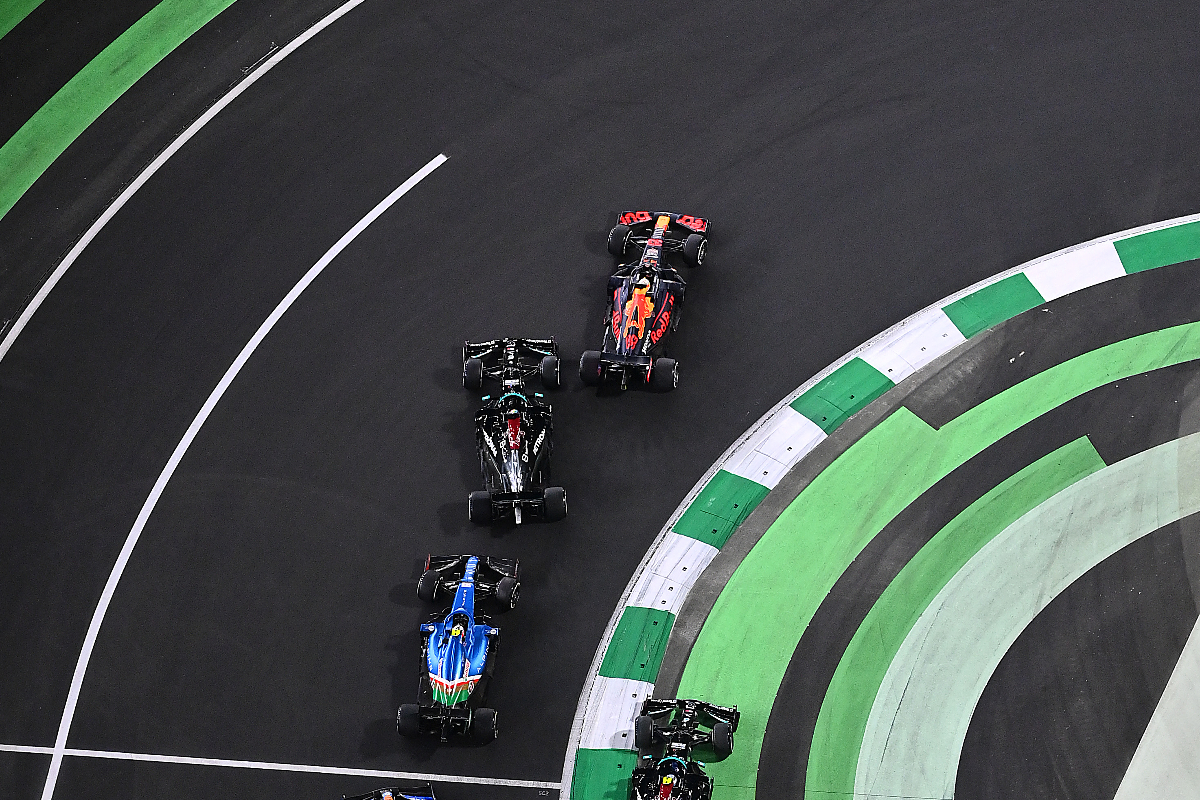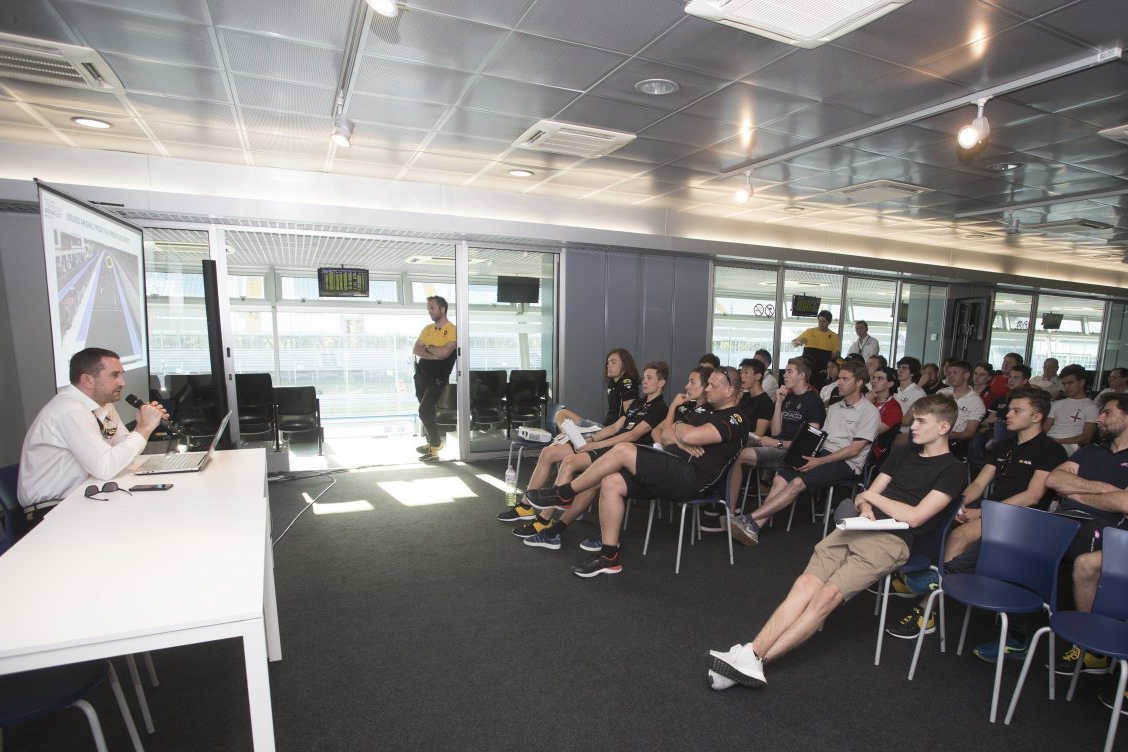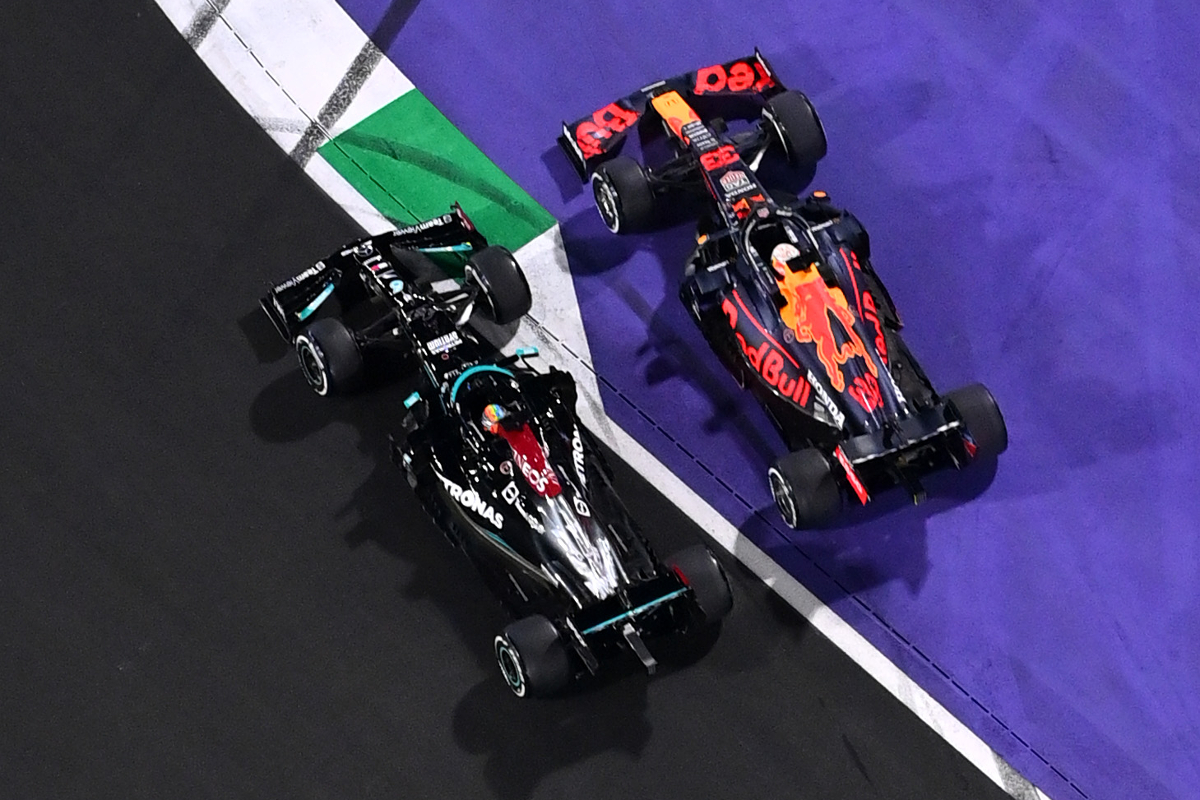
Photos: Red Bull Content Pool
Both the battles on track and the race director’s responses to them in last weekend’s Saudi Arabian Grand Prix caught the attention of the world, but also raised questions for those doing the same job
There was not one, not two, not even three, but four incidents in Jeddah last Sunday night between Formula 1 title contenders Lewis Hamilton (Mercedes-AMG) and Max Verstappen (Red Bull Racing). Each of them required the attention of FIA safety delegate and Formula 1 race director Michael Masi, and were broadcast live to millions of people across the globe.
For fans watching it was entertaining, for other racing drivers it was eyebrow-raising, for journalists and photographers it was the exact kind of drama needed to get clicks and for race directors of other racing series it was a head-in-hands debacle.
It was clear that it was deliberate actions from the two, even with the occasional locked brake or unloaded tyre shuddering on turn-in rather than gripping, but everyone knew the stakes were high in the penultimate race of an intense year-long fight.
But that bigger prize isn’t considered when an incident comes to race control’s attention and an appropriate course of action has to be determined, one option of course being referral to stewards. And the choices made by the race director, and the stewards when called upon, were under as much scrutiny as the driving last weekend.
The first incident involved Verstappen attempting to pass Hamilton around the outside of the 90°-left turn one but going off track (pictured above) and cutting across turn two where he delayed before turning right and racing into the lead while a baulked Hamilton dropped to third behind Esteban Ocon.
With the position deemed to be gained off-track, Red Bull was told during a red flag stoppage shortly after that Verstappen could return the place by dropping to third on the grid for the restart. It’s usual in junior series for a race director to advise for a position to be handed back, but the red flag and a fluffed radio message by Masi made this instance seem extraordinary.
 When the race restarted, Verstappen reclaimed the lead at turn one in a three-wide move. Their next encounter was at the same corner, with Hamilton going to the outside and having his nose briefly ahead. Verstappen braked late and his right-rear didn’t grip, oversteering off and crowding Hamilton off track too.
When the race restarted, Verstappen reclaimed the lead at turn one in a three-wide move. Their next encounter was at the same corner, with Hamilton going to the outside and having his nose briefly ahead. Verstappen braked late and his right-rear didn’t grip, oversteering off and crowding Hamilton off track too.
Red Bull pre-empted Masi and told Verstappen to drop behind, which he attempted at the end of the lap in the messiest way possible. He slowed on the straight, so did Hamilton, he braked in response, then Hamilton braked but they collided.
A few laps later Verstappen was instructed again to let Hamilton by, which he briefly did before diving straight back by. Masi referred their last turn one off to the stewards having deemed Verstappen not to have returned the place, and a five-second penalty was issued. Soon after Hamilton was finally past, after squeezing Verstappen in response, and the win was his.
Another 10s was added to Verstappen’s race time afterwards due to the collision when returning the lead (pictured below), and in isolation the race did not reflect kindly on his racing approach. But combined with November’s Brazilian Grand Prix, where a near-identical move by Verstappen at Interlagos’s turn four sent Hamilton off-track and didn’t go penalised, has led to lengthy driver briefing debates in and outside of F1 and potentially laid a precedent in young drivers’ minds of where the limits now lie in wheel-to-wheel action.
With that in mind, Formula Scout asked several race directors from junior single-seaters for their assessment of the impact the Hamilton/Verstappen battle could be having further down, what in their roles do they have to do to maintain the standards for what is acceptable when drivers race each other, and if Masi made the right decision on the spot. Return to this article in the coming days too to read input from even more series.
The race directors
Neus Santamaria – Euroformula race director, International GT Open assistant race director, formerly marshal at Barcelona
Tamas Zettner Jr – Formula Regional European Championship race director and head of Hungaroring race control, formerly race director (and deputy) for the Formula Renault Eurocup and Hungaroring sporting operator (aka chief marshal)
 What is a race director going to do when a driver in your series (or any other junior series driver) drives in the way Verstappen did at turn one at Jeddah and at turn four at Interlagos and expects only a slight penalty or none?
What is a race director going to do when a driver in your series (or any other junior series driver) drives in the way Verstappen did at turn one at Jeddah and at turn four at Interlagos and expects only a slight penalty or none?
NS: Be tough from the very first time. I’ve discussed this with most of the drivers I worked with in my seven years as a race director, each championship works differently and has different rules so you cannot expect the same decisions in different championships even if the incident is exactly the same.
I think we should work more towards the ‘standardization’ of sporting regulations and penalties in order for teams and drivers to work always in the same way but while we work with different regulations for every championship the decisions will always be different.
TZ: The standard procedure, what I am sure every motorsport follower understands by now is as follows: whenever we observe an alleged breach of the regulations in race control we refer the case to the stewards, then the stewards will examine the evidence presented and – very importantly in junior formula racing – hear the drivers after the session and then take any action they deem fit, naturally within the constraints of the applicable jurisdiction framework. The stewards will also explain to the summoned drivers and team managers why and how the actual decision was taken.
Next, if the situation requires so, for example there is something important to learn from, we will present the case and explain the philosophy behind the decision during the next briefing.
In my view the “let them race” philosophy must satisfy two important principles: the sporting regulations must stay intact, and safety is absolute paramount. You can derive everything else from these premises.
Our drivers should expect that every single incident will be investigated in its own merits and every action we take will reflect the common interest of safety and sporting equity. This may sound vague, but since not all motorsport regulations can be made absolutely exact there will always be room for interpretation and our job is also to make sure the correct interpretation is being followed and observed.

Photo: Fotospeedy
And is a race director’s decision-making on this type of incident going to begin when it occurs, or does the role require you to pre-empt certain kinds of action occurring on track and to start thinking about how you would respond beforehand – and raising those thoughts for discussion in settings such as driver briefings?
NS: The Euroformula briefings are usually more open discussions than the race director delivering a one-way speech so for sure it will be an issue to talk about during briefings. It [Hamilton/Verstappen] has already been a topic we’ve discussed a lot this season and it has to be an agreement between drivers to give space enough in order to have fair and enjoyable races and not having the stewards revising every single overtake and deciding what to do.
I believe it’s always better to discuss things before they happen that’s why it’s really important as a race director to follow other series and see what the issues are there because it’s highly probable that they’ll happen in your championship as well someday.
TZ: We hold a pre-season drivers’ meeting normally before the first event of the season starts where I personally talk about the most important sporting protocols, namely why we apply them and what to expect if disobeying them. We also discuss typical incidents, like leaving the track and gaining a lasting advantage, forcing another driver off the track, causing a collision and the like.
A comprehensive driver quiz is organised too to understand what regulations need to be addressed in detail. Then, as the season progresses, we always discuss what happened the race before and sometimes I even show a clip from another series. For example, I remember playing the video where Verstappen overtook Kimi Raikkonen outside of track limits at Austin.
It is important to understand that we are a junior drivers’ platform. I believe our role is also to educate drivers from the sporting perspective to assist them in their career ladder. If an incident takes place, 99% of the time the stewards take action after the race with all parties invited for a hearing. So, the drivers are asked to explain themselves (a very useful tool!) and many times we find they apologise and admit being overly optimistic, over the limit or simply too aggressive. In other words, most of the time they are behaving as adults, taking responsibility for their actions. Which is really great to see.

Photo: Renault Sport
We do think beforehand about what typical incidents are likely to take place, for example if we have a slow chicane after a long straight with a tarmac run-off area on the inside we emphasise the rules about leaving the track, or if a certain track section is “tricky” we remind them about safety regulations and so on.
With a race director’s hat on or a personal opinion rather than a professional one, do you think the way the top F1 drivers battle each other is setting a bad impression for young drivers? And if so, is this a new phenomenon?
TZ: I don’t think I could ever remove my race director hat in that regard, working in motorsport naturally makes you think deeper, like always trying to peek behind the curtains.
I think what happened in Brazil and in Saudi Arabia is definitely not good for the spirit of the sport and I also think this could pose a bad example for juniors – I might be wrong, but I don’t see why anyone else would take a different view. I thought the very same when Vettel famously collided with Hamilton in Baku a few years ago in the heat of that moment. And there are more bad examples, even in junior racing which mostly go, understandably, undetected by the media.
Nonetheless what really matters here is when things cool down: the reaction from the jurisdictional bodies of the sport and, very importantly, the reactions of the drivers themselves.
That does not mean though that I personally expect drivers to apologise all the time as they may feel and think differently, which is absolutely fine. What I would like to observe though is a constructive and professional approach – and luckily for us, this is the case at FREC.
NS: I think it’s setting a bad impression for sure and it’s not new. When drivers start racing in formulas they don’t want to copy only one step higher they all tend to watch and try to recreate F1 directly. So if they see for example as we saw in Brazil that you can force a car out of track and there is no penalty for sure they will try to copy it with the excuse that “that’s what F1 drivers do and there’s no issue with it”.
 I consider Euroformula as a championship that wants to create the champions of the future that’s why penalties should be tougher, mostly the ones related to safety issues, in order for them to learn step-by-step before reaching the top.
I consider Euroformula as a championship that wants to create the champions of the future that’s why penalties should be tougher, mostly the ones related to safety issues, in order for them to learn step-by-step before reaching the top.
In your professional opinion, do you think Masi made the right decisions on this topic in Brazil and Saudi Arabia?
NS: He did what a race director needs to do which is make them give back the position if it’s a clear incident, if the incident needs an investigation in order to decide what the next step is then it’s taken to the stewards so they can penalise how they think is fair in each incident. For me the decision of the stewards was confusing because in Brazil there was no penalty and in Saudi there was, I think there should be more consistency with penalties in F1.
In your years as a race director, has there been a trend over time of drivers getting more aggressive with each other on track, and has there been changes in attitude over what is acceptable or not in racing conditions?
TZ: Obviously, there are drivers of various backgrounds, experience, driving technique, knowledge, skills and talent, this has always been like that. In terms of bad driving, as I look back, I do not see a general recent upward trend of recklessness or bad attitude. Even with 32-36 cars of FREC, the amount of typical incidents we had in the past year is just a bit more when compared to the 16-20 cars of the FR Eurocup. And it is not surprising, because the driving standard is high.
Causing a collision remains the top alleged offence for which a driver is being reported the stewards, and when penalised, the main reason is being overly optimistic or not paying necessary attention, and I can tell that in many cases they take full responsibility and apologise for their actions. Of course we have debates, sometimes heated, but we are always aiming for a constructive talk. An important aspect here is to keep an open door policy, to be honest and to treat the drivers and teams as colleagues.